MARKET OVERVIEW
The global medical pediatric bed market, which constitutes an industry within the broader medical equipment and healthcare facilities industry, will be a dominant force in pediatric patient care within hospital and clinical environments. As international healthcare networks increasingly specialize and age-segment, demand for beds targeted for infant, toddler, and child use will continue unchanging. These beds are not only created for comfort but also for clinical performance, ensuring safety and the convenience of the provision of care while hospitalization.
The structure of the global medical pediatric bed market will also be a reflection of advancement in patient-focused healthcare systems intended to enhance the recovery environment for pediatric patients. These beds are constructed with specifications that fulfill a combination of therapeutic, ergonomic, and security needs. Adjustable height, side rails, monitoring support, and compatibility with critical care medical equipment will be standard features. The market will also adapt to design changes that relate to infection control requirements and include smart technologies with hospital information system interfacing capabilities.
Public and private healthcare institutions will fuel demand through concentration of capital expenditures on gaining a growing recognition of pediatric-specific health needs. The global medical pediatric bed market will respond to this by offering modular solutions that can be adapted to suit various care settings, ranging from intensive care units to general pediatric wards. Companies will continue to develop configurations that facilitate greater nurse accessibility, efficient patient repositioning, and greater operational flow, all while sustaining the psychological comfort of the child as well as their caregivers.
Compliance and regulatory, the market will need to adhere to stringent patient safety, material durability, and functionality requirements for extensive clinical use case scenarios. This will necessitate ongoing material development, such as antimicrobial coatings and lightweight alloys, to ensure clinical standards and simplify mobility. Moreover, frequent global health and safety guidelines updates will impact the design and engineering standards adopted during product development.
Geographic diversification will also be a feature of the global medical pediatric bed market, with manufacturers and distributors targeting healthcare system development in emerging economies while remaining aware of difficult hospital infrastructure requirements in advanced economies. Access to public health programs to reduce infant mortality rates and improve pediatric hospital infrastructure will direct some production from this industry to specific healthcare agendas and procurement priorities.
Tech integration will increasingly gain momentum, with smart bed functions being integrated into children's care environments. These include some of the following: alert systems, in-life patient monitoring data transmission, and smart adjustments preconditioned in line with clinical prescriptions. The global medical pediatric bed market will align their products to address such requirements by making strategic investments in R&D and collaborations with health tech firms.
As hospital design moves toward child-friendly units and multi-functional space, the market will expand its reach beyond clinical performance into the healing environment. Bed design will change to include features that reduce patient stress and promote interaction for prolonged hospital stays, solidifying further the unique nature of the global medical pediatric bed market among healthcare institutions.
Global medical pediatric bed market is estimated to reach $2,358.12 Million by 2032; growing at a CAGR of 8.9% from 2025 to 2032.
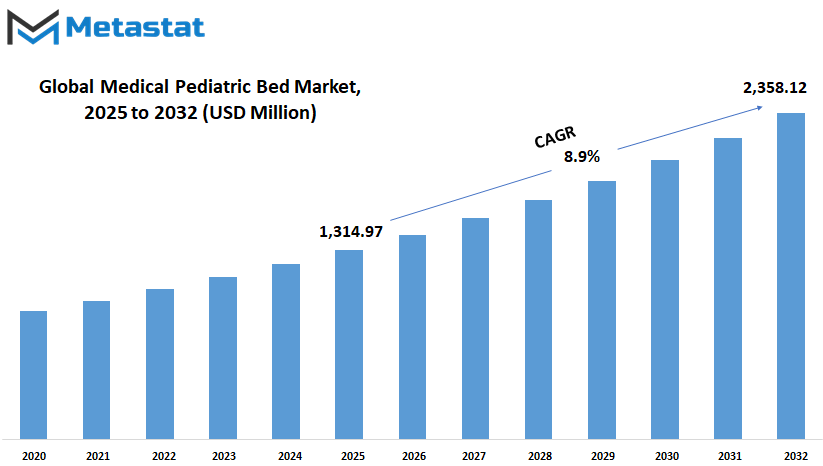
GROWTH FACTORS
The global medical pediatric bed market is attracting interest because of the increasing number of children who are in need of specialized medical attention. Hospitals are admitting more children than ever before, creating a growing demand for equipment that meets pediatric requirements. This has brought medical pediatric beds into greater importance, not only in developed nations but also in regions where healthcare is still lagging behind. With an increased number of children being admitted for treatment because of different illnesses, the demand for beds that provide comfort, protection, and specialized care has become increasingly significant.
The increased demand has one of its principal reasons in the increased number of pediatric illnesses. More illnesses among children are being diagnosed on an increasing scale, and with increased awareness among parents and caregivers, hospitalization is on the rise. When kids are in the hospital, they need care that is not the same as adults, and specially designed medical beds for them become important for their treatment. These beds are constructed according to the size, comfort, and safety requirements of child patients and their use in hospitals and clinics is anything but a decision it's essential.
Improvement in pediatric healthcare facilities is yet another critical driver pushing the market ahead. Most countries are investing more in improving their hospitals to treat children better. New technology is being implemented to make pediatric beds smarter, safer, and more flexible. Adjustable heights, improved safety rails, and built-in monitoring devices are becoming the norm. These features not only enable doctors and nurses to care for children better, but they also make the children feel more comfortable while they stay at the hospital.
In spite of this advancement, there are a few issues that could hamper the development of the global medical pediatric bed market. One of the major issues is the price. These beds are usually pricier than normal hospital beds. For many medical centers, particularly in underdeveloped areas, purchasing such equipment is a cost burden. To that, healthcare budgets can be quite restrictive, making it impossible to allocate funds towards sophisticated pediatric furniture, even when the need is apparent.
Looking to the future, there is optimism that technological advances will bring more cost-effective and efficient solutions. As technology develops, we can anticipate smarter design and new functionalities that not only enhance patient care but assist hospitals in controlling costs more effectively. This creates new possibilities for expansion, particularly as more healthcare practitioners realize the importance of investing in quality pediatric care.
MARKET SEGMENTATION
By Type
The global medical pediatric bed market will continue to grow as healthcare systems become increasingly interested in improving the comfort and safety of children. Hospitals and clinics are answering the call to design specialized spaces for children, and pediatric-use beds are a primary component of that effort. They are not merely sleeping tools; they are a part of the healing environment of a child. With technological advancements, the usage and design of these beds will also be changed. In the future, more focus will be on electric pediatric beds.
The beds are made with the ease of adjustment in mind and often with the mere push of a button. Caregivers can lift or lower different components of the bed with a lot less effort, thereby reducing the physical workload on medical staff. It also suggests that children can be relocated or shifted without disturbing them unnecessarily, thus recovery becomes less stressful. Such beds are bound to gain popularity as hospitals aim to improve both patient care and working conditions for medical staff. Manual pediatric beds, although simple, are still found in some healthcare settings.
In others, especially with tight budgets, hand beds will be the way to go. They are less costly and do not need electricity, which is required to run electric beds. While they are not as convenient as electric sleep surfaces, they are more straightforward, simpler to maintain, and highly dependable. In the future, the structure of these beds can also be modified to make them safer and more comfortable for children, even if not by new accessories. Semi-electric pediatric beds will probably be an ideal middle-ground choice.
These beds usually permit electric adjustment of some parts, but others might still need manual adjustment. This also makes them more convenient and useful in the majority of settings, especially where a full electric version would be too costly or where the backup manual alternative proves useful during an electrical outage. These beds combine the best of manual and electric versions and might be a smart choice for most hospitals. As medical requirements change and medical technology advances, the global medical pediatric bed market will keep growing. Comfort, safety, and efficiency will remain at the forefront, and the beds will be more than just a piece of medical equipment, but an invaluable tool in the healing process of a child.
By Features
The global medical pediatric bed market will further grow as healthcare professionals put more emphasis on patient safety, comfort, and ease of treatment, particularly for children. Clinics and hospitals will require solutions that cater to both young patients and their parents or caregivers, which will drive demand for advanced pediatric beds. As technology continues to evolve, these beds will be not only aimed at sleep but also towards facilitating treatment and recuperation. The demand for better care environments will raise the stakes for more care-oriented beds that are better designed, more considerate in their features, and more versatile structures that react to various medical requirements.
In the future, there will be an increased demand for pediatric beds with special features. Adjustable beds will become more popular because they assist in lessening strain on the healthcare workers and aiding in easier caregiving to children safely. The beds are most likely to become increasingly popular in large and small care centers. The fact that they can be raised or lowered based on need assists in avoiding injury to caregivers and making the process easier on the patient. Parents and doctors alike will appreciate this option, particularly when they have children who require frequent monitoring and support.
Fixed-height beds will still be used when a certain degree of consistency and stability is required. Although these may not be as versatile as some other models, they are sometimes less expensive and simpler to keep clean. These beds will most probably be utilized in emergency situations or in institutions that receive normal pediatric cases. Their structure will continue to prioritize safety, simplicity in cleaning, and kid-friendly comfort. Despite the absence of motion functionality, fixed height beds will still remain a dependable choice where simplicity and reliability are most important.
Trendelenburg beds shall gain greater significance in the global medical pediatric bed market as increased numbers of hospitals seek better management of complicated health issues. Trendelenburg beds enable caregivers to position children in controlled ways, such that changes in the condition of a child can be responded to in a timely manner. More frequently in intensive care and recovery wards shall this feature be utilized in the future. As medical procedures become increasingly sophisticated, beds such as these will aid recovery by enhancing circulation and assisting staff in handling emergency situations.
The global medical pediatric bed market will continue to expand as standards of care increase. Every feature whether adjustable height, fixed height, or Trendelenburg will contribute to the creation of safer, smarter healing spaces.
By Application
The global medical pediatric bed market will continue growing steadily as children's medical needs garner greater attention throughout the world. The more technologically advanced medicine becomes, the more is invested in creating equipment that can accommodate especially children. Pediatric beds are not just about having a place to lie down. They are highly critical pieces of equipment that help in healing, create safety, and are comforting during treatments. Over time, parents and doctors have started demanding more from these beds, expecting them to be improved in all aspects of safety, adjustability, and design.
In the future, hospitals will lead the way in this market. Hospitals require beds which are strong and designed to be reused, oftentimes in suboptimal conditions. As the population increases and the availability of healthcare is improved in more regions, hospitalization counts among children will also increase. Such facilities would need equipment that not only meets safety regulations but will improve the overall quality of care being delivered to both the child and the medical personnel. This will make manufacturers innovate further, focusing on employing materials that are easier to clean, mechanisms that are simpler to employ, and features that reduce the possibility of injury.
Medical clinics will also shape the future of the global medical pediatric bed market. Clinics often have many patients but operate in smaller areas. There is more need for compact, multiple-functional beds that are simple to move. Clinic beds need to be functional and flexible. In the future, there can be greater use of intelligent systems that can help monitor a child's health, alert staff to inconsistencies, and offer electronic control systems to relocate beds without manual labor.
Families are surprising but major participants in this market. As home health care increases, more so for children with chronic illness or disability, families require pediatric beds that may be used safely within the home. The beds need to be less intimidating in appearance, simple to use, and possess essential features that ensure comfort and security. The future may bring lighter, lower-cost models that are easier to transfer from one room to another and better fit into home environments.
As these various regions grow, the global medical pediatric bed market will need to be agile, offering smarter, safer, and more accessible designs to meet the unique needs of children in various care settings.
By Distribution Channel
The global medical pediatric bed industry will keep growing as medical requirements rise and technology becomes more advanced. Medical pediatric beds are specially designed for children in the hospital, providing safety, comfort, and support in the course of hospitalization or treatment. As awareness of healthcare in children grows and demand for high-tech medical devices grows, the industry is set to experience steady growth in the coming future. Parents and caregivers also anticipate that the hospital can deliver quality care, and pediatric beds play a pivotal role in meeting these expectations.
Looking at how the beds are made available to customers, the distribution channels are bifurcated into two major avenues offline and online. Offline channels include hospitals purchasing directly from distributors, medical equipment stores, or agreements with manufacturers. This strategy gives the professionals a chance to see the beds in person, experience their functions, and have their questions resolved directly. The majority of hospitals still prefer this route, especially when purchasing high-end or specialized beds. The personal trust that occurs in face-to-face interactions still has authority in most parts of the world.
Online distribution becomes more applicable, however. Buyers are growing increasingly comfortable shopping, comparing, and even placing orders for medical equipment through sites. This shift has heightened the convenience with which smaller clinics and individual buyers can access more extensive numbers of products. Internet platforms also offer buyers product descriptions, reviews, and video demonstrations in detail, which allow buyers to make better decisions without ever seeing the beds. With the growth of internet penetration and the rise of digital technologies in healthcare settings, the distribution channel will be increasing.
Offline and online routes will likely collaborate with each other in the future. A hospital can browse beds online initially, seek advice from personnel, and then visit a showroom before buying. Or an individual can learn about a product in a trade show first and then buy it online subsequently. This balanced nature of convenience and human touch will characterize the way the global medical pediatric bed market will evolve.
As medical systems head into the future, demand for children's care products will grow. With greater focus on the needs of children and the spread of online resources in the medical field, the global medical pediatric bed market will evolve to meet these new needs. Whether on the internet or through a supplier visit, buyers will find products that help them care for children in the optimal way.
|
Forecast Period |
2025-2032 |
|
Market Size in 2025 |
$1,314.97 million |
|
Market Size by 2032 |
$2,358.12 Million |
|
Growth Rate from 2025 to 2032 |
8.9% |
|
Base Year |
2025 |
|
Regions Covered |
North America, Europe, Asia-Pacific, South America, Middle East & Africa |
REGIONAL ANALYSIS
The global medical pediatric bed market is on the cusp of dramatic changes as geographies respond to growing healthcare needs and shifting population dynamics. In the future, geography will continue to have a big impact on how this market will evolve. All geographies have their own distinct needs, challenges, and innovation, creating a constantly shifting dynamic for growth.
North America, which includes the U.S., Canada, and Mexico among its members, will continue to be at the forefront due to its strong healthcare infrastructure and emphasis on technology. As healthcare environments become more patient-centric in comfort and safety, the demand for sophisticated pediatric beds would be expected to rise. Plans to upgrade children's hospitals and pediatric wards in the U.S. are expected to propel future demand. Canada and Mexico will feel the growth too through advancements in public health and increased investments in children's health.
Europe will have action too. The UK, Germany, France, and Italy will continue to upgrade their hospital equipment with an increasingly greater focus on children's needs. Public demands for service levels within hospitals and patient care might prompt healthcare providers to employ more modern solutions. This. This will open up new opportunities in this market. The European continent is also moving towards more affordable healthcare, which can give us confidence to invest in safer, more efficient pediatric beds.
In Asia-Pacific, countries like India, China, Japan, and South Korea are aggressively developing their healthcare industry. Governments in this region are increasing spending on public hospitals and promoting policies to improve child health. With a growing population and improved access to healthcare, demand for medical pediatric beds would naturally rise. All these countries would be key drivers of future demand in the market.
South America also will feel change, particularly in Brazil and Argentina. While there remains difficulty in the funding and hospital infrastructure arenas, efforts to make healthcare systems better can push demand higher over the next several years. The remainder of South America will follow this trend stepwise, as access and quality increase.
In Africa and the Middle East, growth is slower but consistent. South Africa, Egypt, and GCC countries are enhancing hospital services and pediatric care investments. Growth, though uneven, presents hope for growth in the future. As medical standards improve in these regions, the global medical pediatric bed market should gain from greater access and better care systems.
In every region, the future of the global medical pediatric bed market will be dictated by one goal: improved care for children. With investment, innovation, and a focus on safety, the market will grow based on both local priorities and global developments.
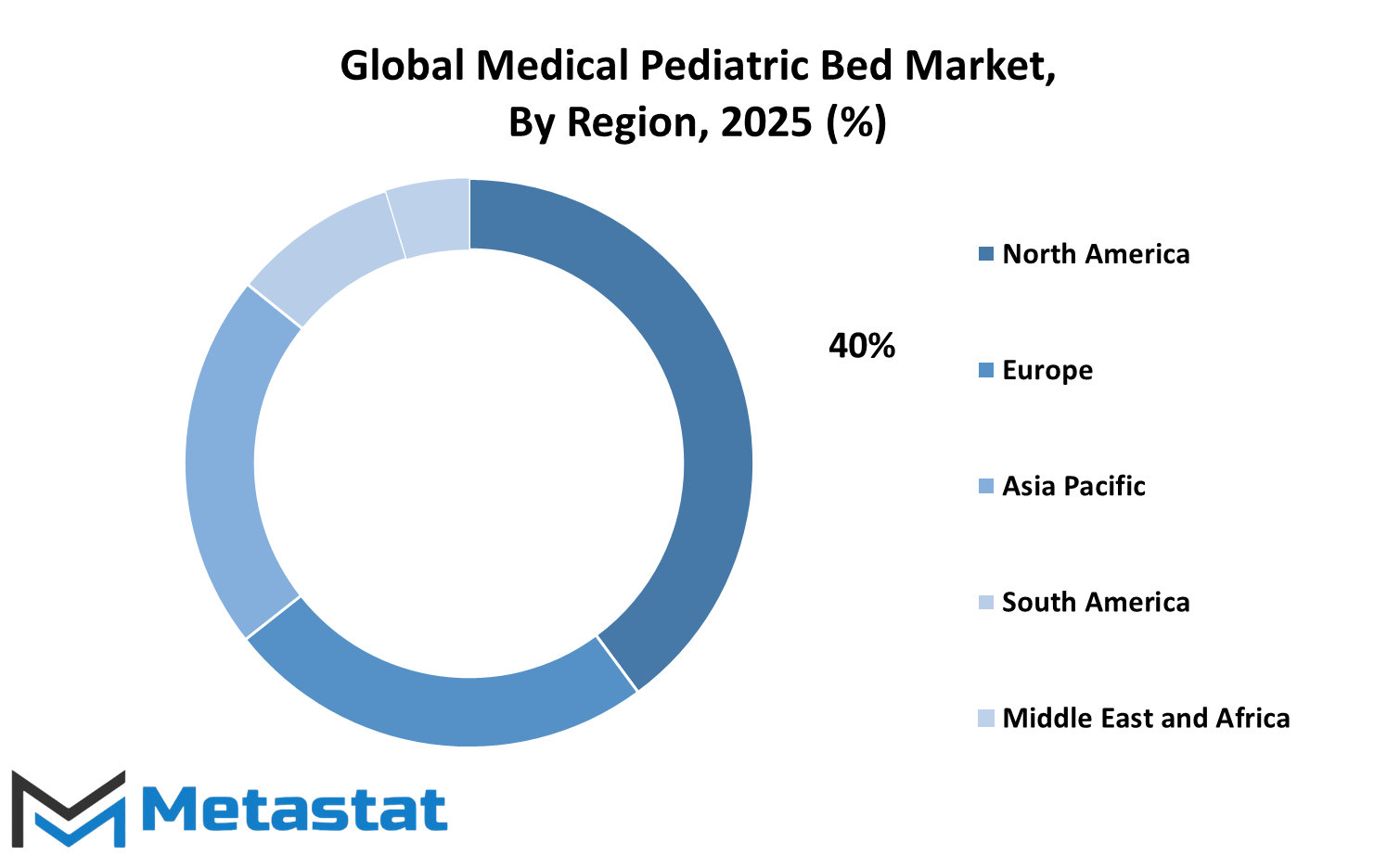
COMPETITIVE PLAYERS
The global medical pediatric bed market is likely to witness significant alterations in the coming years with the focus on children's medical care gaining more traction across the healthcare industry. Greater emphasis on improving facilities for children in hospitals will direct growing demand for specialized medical beds appropriate for pediatric needs. The increase in child patients and the calls for better facilities in treatment have already changed the manner in which hospitals, clinics, and even home care settings perceive patient treatment. The calls for comfort, safety, and efficiency in treatment will determine how manufacturers and suppliers respond to this added demand.
What is unique about this market is the position that the leading competitive players will still maintain. Companies such as Stryker Corporation, Universal Medical, and Invacare Corporation are already leading the pack. These companies, along with others such as DIAMEDICAL USA and Medline Industries, Inc., have not only focused on function and safety but also aimed at developing products that take into consideration the special requirements of younger patients. Their continued investment in product and research development will probably bring more user-friendly, intuitive, and adaptable beds for both caregivers and medical professionals. A few manufacturers already have designs in mind that work well for hospital and home applications, recognizing pediatric care is not always limited to clinical environments.
Hopefull Medical Equipment Co., Ltd. and LINET Group SE are examples when it comes to firms entering into smart bed technology and lightweight but durable materials. Joerns Healthcare LLC and Paramount Bed Co., Ltd. are developing solutions that reduce caregiver fatigue while increasing patient comfort at the same time. These companies know that physicians, nurses, and parents alike come into contact with these beds, and therefore ease of use will continue to be of prime importance. Novum Medical Products, Howard Wright Limited, and Drive DeVilbiss Healthcare, among branded players and newcomers, are also changing the nature of competition. Their products could potentially include digital monitoring capabilities or sensitivity levels tailored to different age brackets and conditions. Travis Medical Sales Corporation and LEEX LLC, and Meditek Engineers and Tychemed, among peers, are also likely to intensify the pace of innovation with more versatile and value-for-money pediatric healthcare options.
Overall, the global medical pediatric bed market will not remain static. Competitors will make gains by balancing affordability, safety, and innovation. Their contribution to market advancement will help define the fate of pediatric treatment.
Medical Pediatric Bed Market Key Segments:
By Type
- Electric Pediatric Bed
- Manual Pediatric Bed
- Semi-Electric Pediatric Bed
By Features
- Height Adjustable
- Fixed Height
- Trendelenburg
By Application
- Hospitals
- Medical Clinics
- Household
By Distribution Channel
- Offline
- Online
Key Global Medical Pediatric Bed Industry Players
- Stryker Corporation
- Universal Medical
- Invacare Corporation
- DIAMEDICAL USA
- Medline Industries, Inc.
- Hopefull Medical Equipment Co., Ltd.
- LINET Group SE
- Joerns Healthcare LLC
- Paramount Bed Co., Ltd.
- Novum Medical Products
- Howard Wright Limited
- Drive DeVilbiss Healthcare
- Travis Medical Sales Corporation
- LEEX LLC
- Meditek Engineers
- Tychemed
WHAT REPORT PROVIDES
- Full in-depth analysis of the parent Industry
- Important changes in market and its dynamics
- Segmentation details of the market
- Former, on-going, and projected market analysis in terms of volume and value
- Assessment of niche industry developments
- Market share analysis
- Key strategies of major players
- Emerging segments and regional growth potential



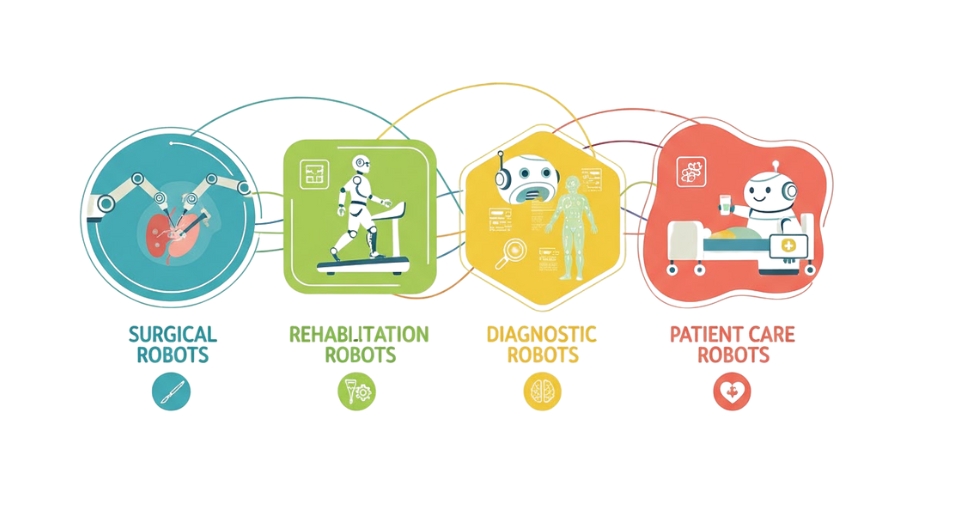
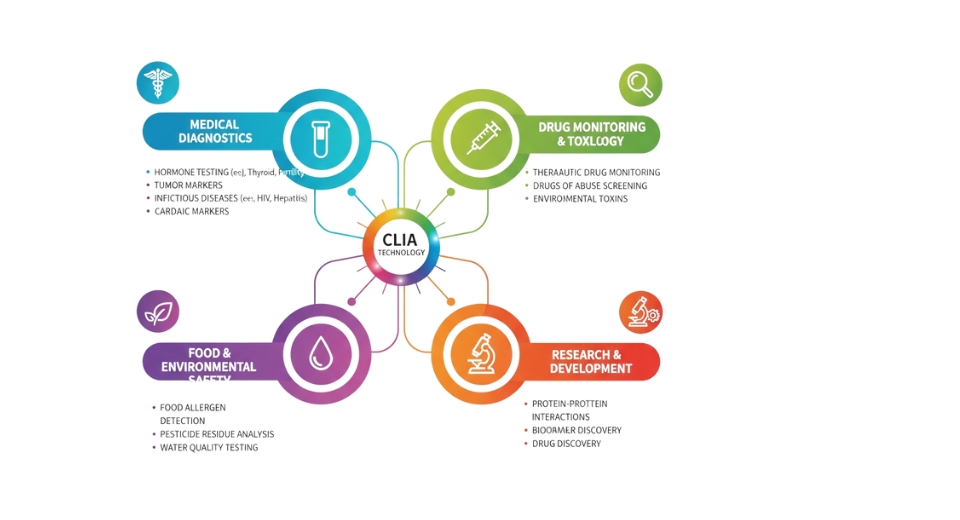
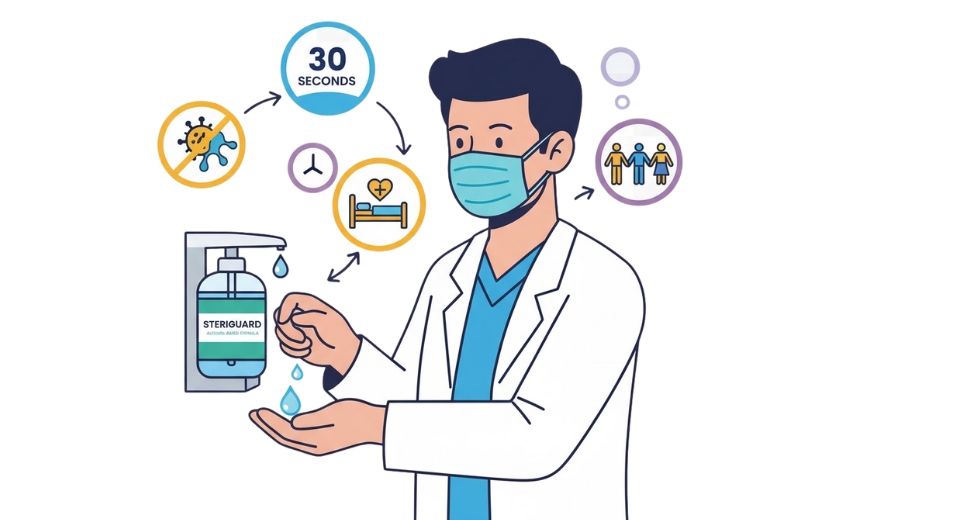
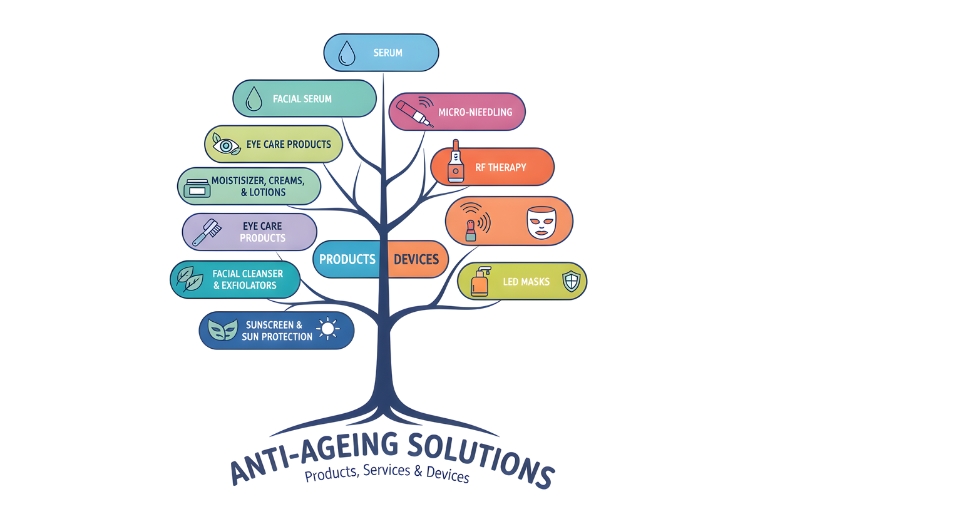

 US: +1 3023308252
US: +1 3023308252






